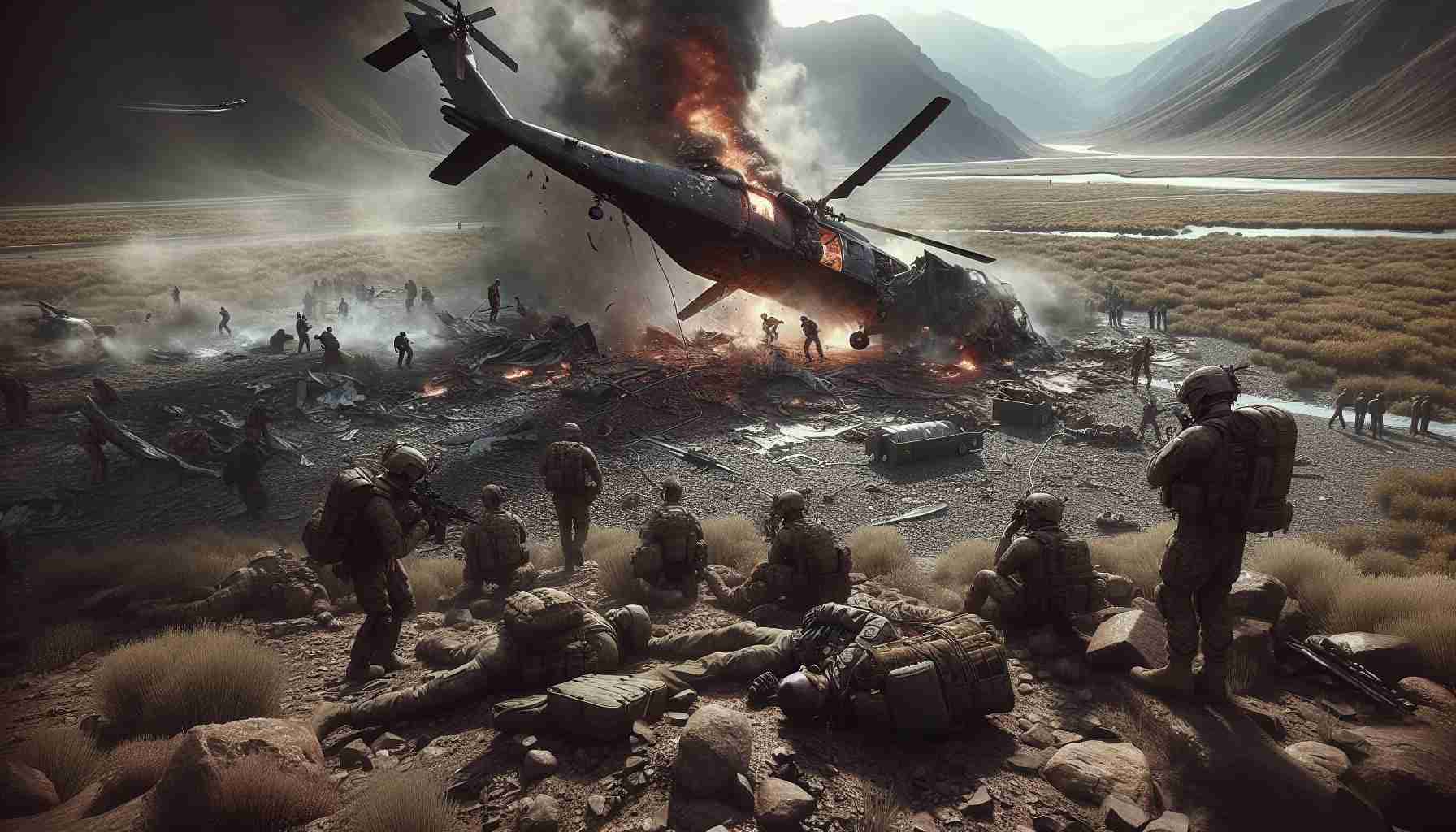A fatal helicopter crash during a daring rescue operation in a conflict zone has left two soldiers dead and several others wounded. The incident, occurring at night in Gaza, was a devastating blow to the unit involved.
The ill-fated helicopter, tasked with evacuating a critically injured soldier, encountered challenges during landing due to poor visibility and dusty conditions. These factors, along with the complex terrain, resulted in a tragic crash that was not caused by enemy fire or technical malfunctions.
Rescue efforts were swiftly initiated by ground forces, led by a Brigadier General, highlighting the cohesive and rapid response in the face of adversity. The wounded were promptly evacuated to a medical facility, mitigating further harm.
Reflecting on the incident, Air Force Commander Major General emphasized the inherent risks faced by soldiers engaged in rescue missions during wartime. He acknowledged the selfless bravery demonstrated by the fallen soldiers and reiterated the Air Force’s commitment to learning from such tragedies to enhance operational safety.
This heart-wrenching event underscores the dangers inherent in military operations, underscoring the sacrifices made by servicemen and women in the line of duty.
Unforeseen Details Uncovered in Tragic Helicopter Incident During Rescue Operation in Conflict Zone
Amidst the aftermath of the heartbreaking helicopter crash during a daring rescue mission in Gaza, additional details have surfaced shedding light on crucial aspects of the incident that were not initially disclosed.
One key question that arises is whether the helicopter involved in the operation was adequately equipped for night-time rescues in challenging environmental conditions. This question is pertinent as it raises concerns about the preparedness and equipment standards for such high-risk operations.
Moreover, reports indicate that communication issues between the helicopter crew and ground forces may have contributed to the challenges faced during the landing attempt. Understanding the communication breakdowns and their impact on the mission’s outcome is vital for improving coordination and response strategies in future operations.
Another crucial aspect that has sparked debate is the decision-making process that led to the mission being carried out under the prevailing visibility and weather conditions. Analyzing the risk assessment protocols and decision-making framework will be essential in preventing similar tragic incidents in the future.
In terms of advantages, the prompt and coordinated response from ground forces following the crash exemplifies the resilience and teamwork among military units in crisis situations. The successful evacuation of the wounded soldiers to a medical facility underscores the importance of quick intervention in mitigating further harm.
On the flip side, the incident has raised concerns about the adequacy of training and preparedness for rescue operations in complex terrains and adverse conditions. Addressing these concerns will be pivotal in enhancing the safety and efficiency of future missions in similar environments.
Key Questions:
– Was the helicopter adequately equipped for night-time operations in challenging conditions?
– How did communication breakdowns impact the outcome of the mission?
– What were the decision-making processes leading to the operation under poor visibility conditions?
Key Challenges and Controversies:
– Ensuring equipment readiness and standards for high-risk operations
– Improving communication protocols between air and ground units
– Enhancing risk assessment and decision-making frameworks for rescue missions
Advantages:
– Swift and coordinated response by ground forces
– Successful evacuation of wounded soldiers to medical facilities
Disadvantages:
– Concerns regarding training and preparedness for complex rescue operations
– Need for reassessment of operational protocols in adverse conditions
For more insights on military rescue operations and safety measures, visit Defense News.
